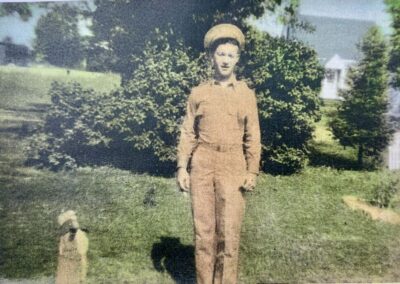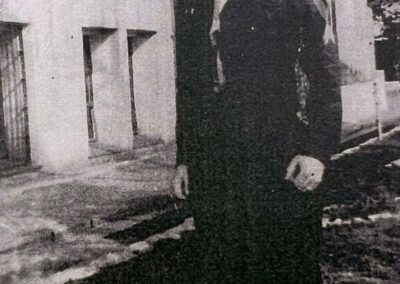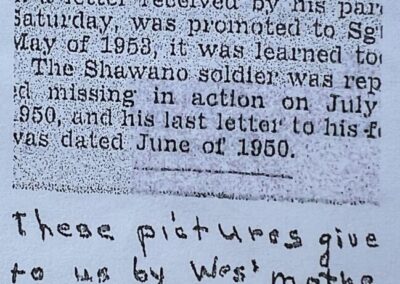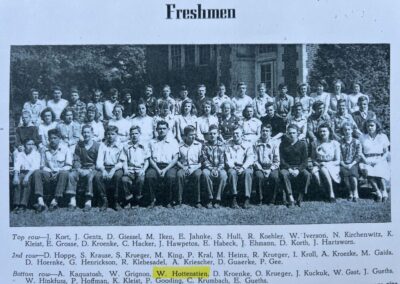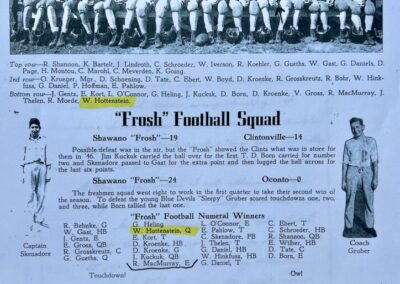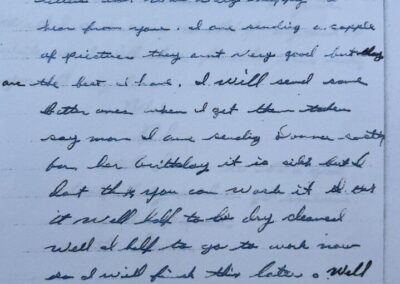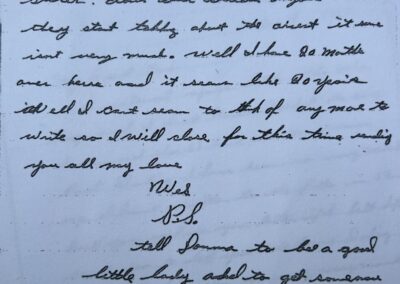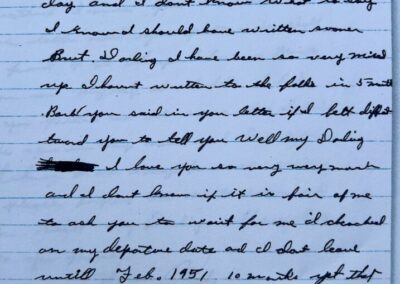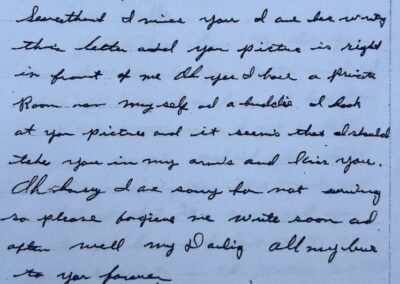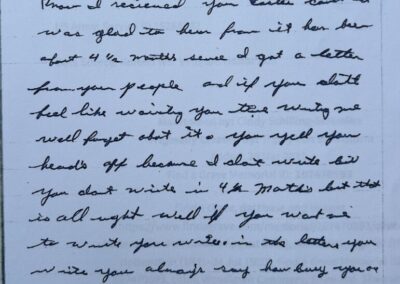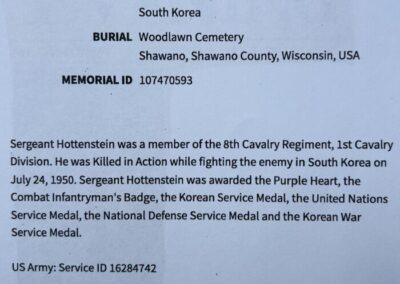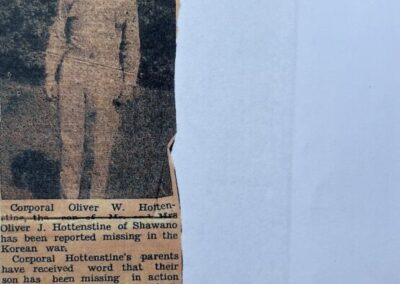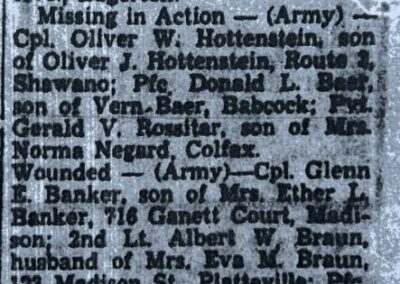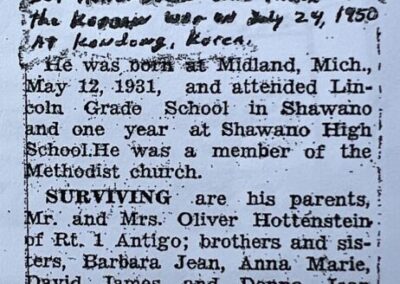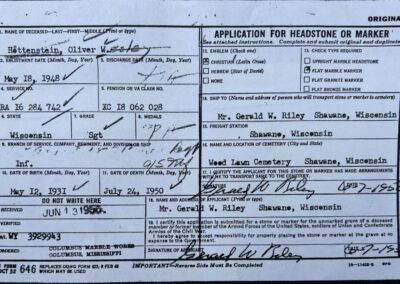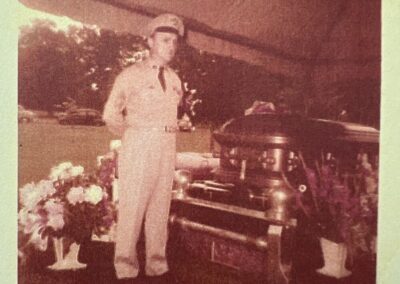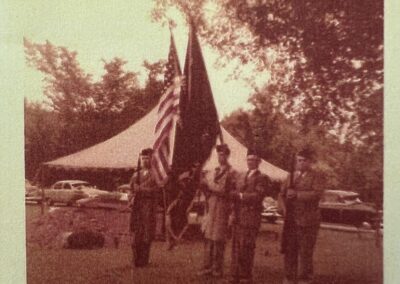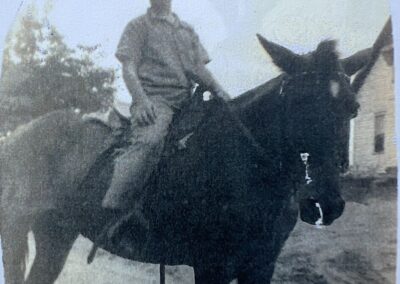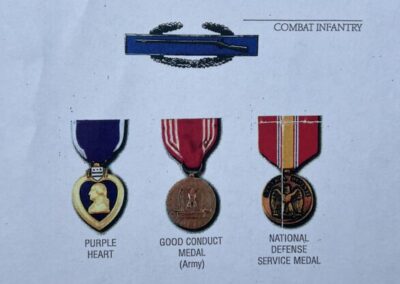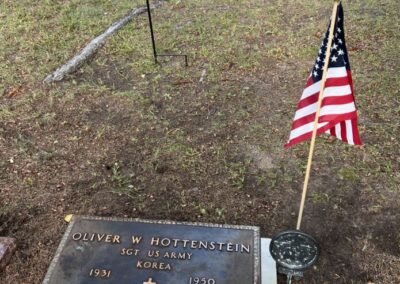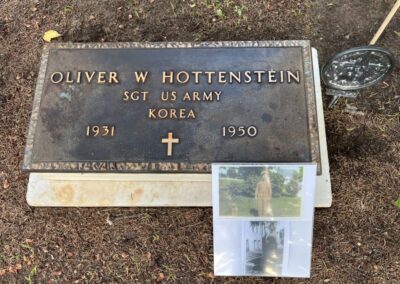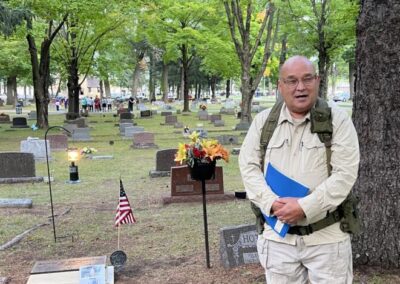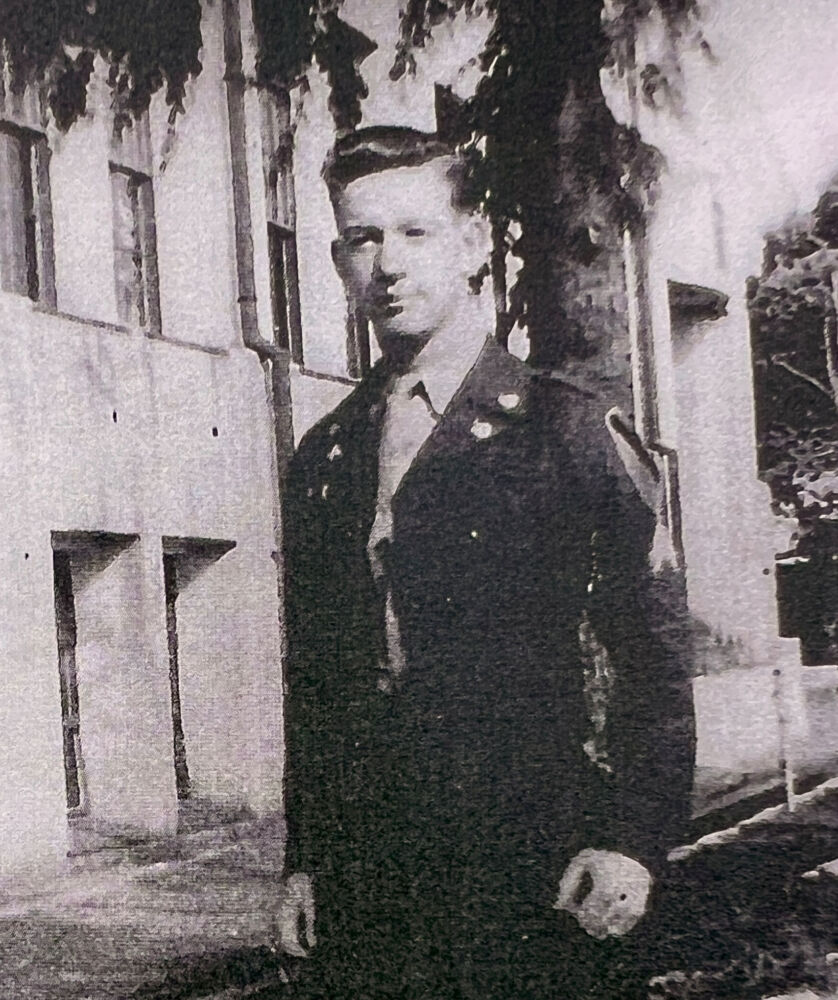
Photo Gallery
Sargent – Oliver W. Hottenstein
Born in Midland, Michigan on May 12, 1931, the only child of Oliver J. and Mary (nee Donton) Hottenstein. The family moved to Shawano and lived on Waukechon Road on Shawano SW side.
“Wes” as he was called, attended Lincoln School and one year at Shawano High School where he played on the freshman football team. Wes quite school after his freshman year and worked for “City Dairy” and “Melberg’s Bakery.” Wes was a member of the Methodist Church.
While a youngster, his parents divorced. His mom moved to Florida and his dad married Frances and they eventually moved to Antigo. Rather than moving to Antigo, Wes decided to remain in Shawano and lived with his cousins.
Wes’s first mode of transportation was a horse that he got around the age of seven. He then progressed to a scooter, a motor cycle and finally a Model A automobile. One time while visiting his mom in Florida, he was reprimanded by local law enforcement for riding his cycle up and down the beach which wasn’t permitted.
A year after he quit high school, Wes joined the Army on May 18, 1948, six days after turning 17. He did 14 weeks of basic combat training and infantry training at Fort Knox, Kentucky. He had a stop over at Camp Kilmer, New Jersey, on his way to occupation duty in Japan in August 1948 which was to be a 30-month tour. In Japan he was assigned to Headquarters Troop, 8th Calvary Regiment of the first Calvery Division. His service number was RA16284742.
By July 1950, Wes had been in Japan for 23 months with 7 months to go. He had been promoted to corporal and was bored with Japan and couldn’t wait to get back home. All along, he had been writing to his girlfriend, Barb, and was counting the days until they would be together.
On Sunday, June 25, 1950, North Korea invaded South Korea with 90,000 troops. On June 30, 1950, the U.S. Army’s 24th Infantry Division was ordered to Korea from Japan. The Division landed at the southern port of Pusan and a 540-man battalion was sent north to slow the North Korean advance. This battalion was known as “Task Force Smith” and met the enemy on July 5, 1950, 25 miles south of the Seoul at Osan.
Meanwhile, Wess’ 10,000-man First Calvary Division landed at Pohan Dong Korea, 60 miles north of Pusan on July 18, 1950. That same day, the unit moved by truck and rail 83 miles to Yong Dong to relieve the 24th Division and slow the advancing North Korean Army. Wess’ unit arrived at Yong Dong on July 19, 1950. The battle of Yong Dong took place on July 22-25, 1950 and the 96-mile fighting retreat to Pusan continued. At Yong Dong, the First Cavalry Division suffered 275 killed while North Korean losses were 2,000.
As the North Korean Army continued to move south, the fighting retreat by U.N. units bought time for the Pusan perimeter to be strengthened with arriving troops. The North Korean Army reached the 140-mile-long Pusan perimeter on August 4, 1950. The battle raged until September 18, 1950 when the North Korean Army retreated and the siege was lifted. During this 46-day battle, 64,000 North Korean, 40,000 South Korean, and 5,000 U.S. troops died.
At the Battle of Yong Dong, on July 24, 1950, Wes was listed as “missing in action.” He had only been in Korea for seven days. The next five years was a nightmare for Wess’ family as they waited for information as to whether Wes had been wounded, captured, or killed. Wess’ name appeared several times in state newspaper articles which listed missing Wisconsin service members. In absentia, in May 1953, Wes was promoted from corporal to sergeant. Then the armistice was signed on July 27, 1953 which ended all fighting.
Six months later, in January 1954, Wess’ status changed from MIA to presumed dead. In May 1955, the family was notified that Wess’ remains had been recovered and was on the way home. The remains arrived at the train station in Shawano on June 4, 1955 escorted by Master Sargeant Peter Dzimba.
The wake was held on Sunday, June 5, 1955 at Karth Funeral Home. The next day, June 6, 1955 at 1:30pm the funeral service was held at the Methodist Church with Reverand W.E. Williamson officiating. Burial was in Woodlawn Cemetery in Shawano.
On June 7, 1955, Shawano Veterans Service Officer, Gerald Riley, ordered the white marble grave stone. Withing a few months it arrived at the train station in Shawano from “Columbus Marble Works” in Columbus, Mississippi.
Sergeant Oliver W. Hottenstein was 19 years, 2 months, and 6 days old when he died on July 24, 1950. Wes had been in the army 26 months. It took another five years for his remains to return home.
The area of Yong Dong, where Wes died, is located 100 miles south of Seoul and 100 miles north of Pusan which is the half way point between the two cities. Yong Dong is located in South Korea and is accessible by westerners.

